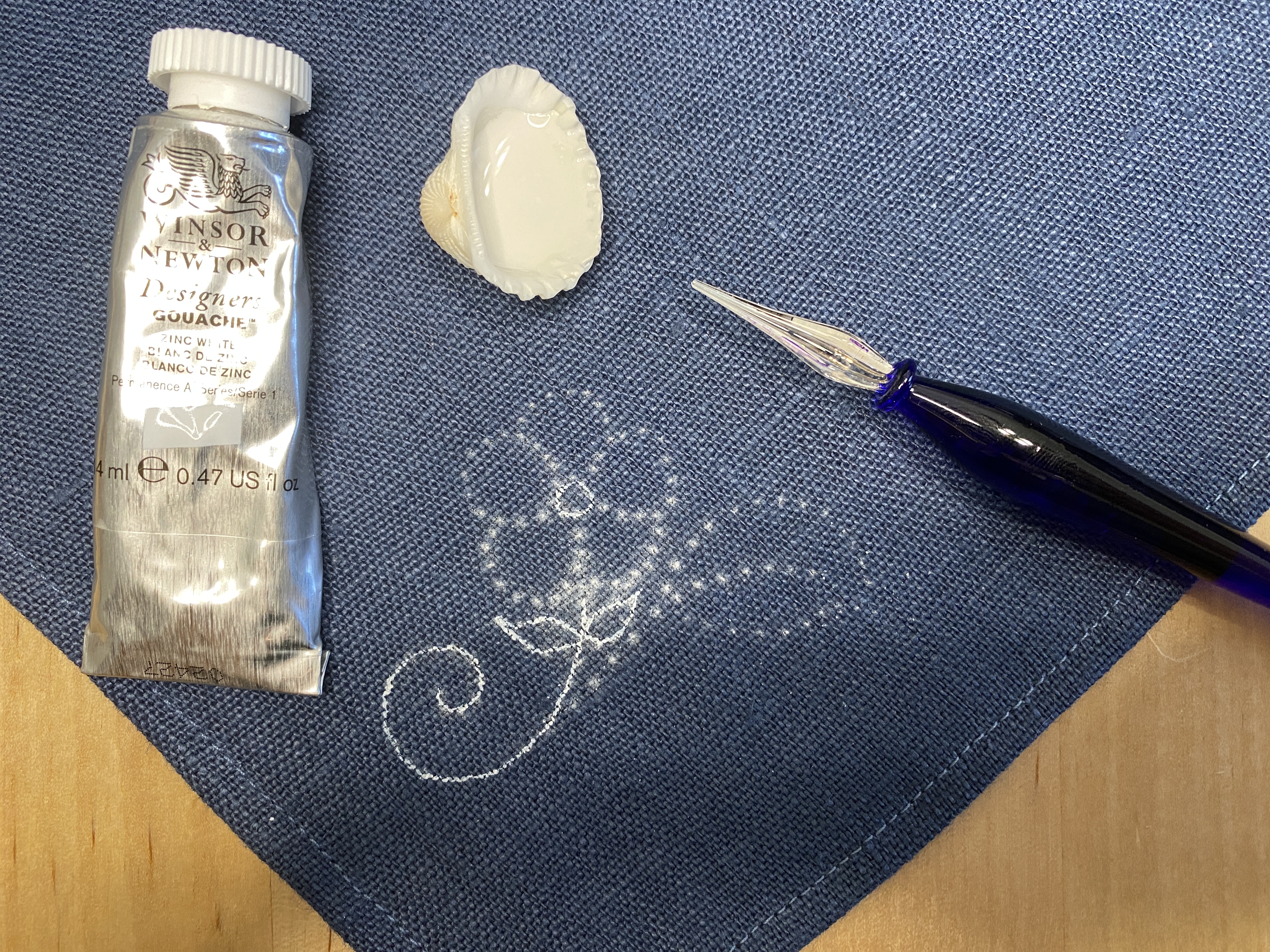My favorite pattern transfer method for washable hand embroidery projects

Gouache paint and a glass dip pen. Here I’m using it with prick and pounce on dark fabric, but it works if you’re tracing a pattern on light fabric as well – you’ll want a tinted gouache, though.
Why gouache? The great thing about gouache, for painting and for our purposes, is that it’s always water soluble. On paper it can be applied, dried, and re-dissolved for adjustment. On cloth, it will dissolve and wash off. It comes out of the tube very thick, and you can dissolve it to your desired consistency. Importantly, unlike ink, the pigment sits on top of the cloth instead of soaking in and bleeding and making design lines the width of your little finger.
Why a glass pen? I tried a couple of different calligraphic dip pens, but steel nibs catch on the cloth. The glass nib glides much more smoothly over the cloth, and tends to hold more gouache at a time than a calligraphy nib. You can use a brush, but for most of us it’s easier to use a pen. Plus, it’s an excellent excuse to buy and use a gorgeous glass pen…
Set up your transfer: prick and pounce for dark fabric, or align your pattern and cloth for a light fabric. Mix a pea-sized bit of gouache with five or six drops of water to get a milk-like consistency. When in doubt, go thinner rather than thicker. Dip your pen into the mixed gouache and start tracing your pattern. I can get up to an inch of good line before dipping again.
Use white gouache for dark fabric, or white slightly tinted with blue for white fabric. Or tint it to match your thread color, I’m not the boss of you. If any of the pigment doesn’t wash out the first time, the tint will help the design line to blend in until the next washes.
I use Winsor and Newton gouache because I use it for calligraphy too, but any cheaper (non-acrylic!) gouache should work just fine.
Your gouache lines will hold up to the embroidery process much better than graphite or sewing transfer pencils.
Mary Corbet has a good article on the prick and pounce method . She’s using dark powder on light fabric; I used talcum powder for mine.